How to Remove Warts on Dogs



See files for Dogs
Warts on dogs can appear relatively frequently, especially as the dog ages. Warts are characterized as benign superficial tumors which usually do not have any serious ramifications for canine health. We do need to be careful as there can be complications if the dog's wart starts bleeding. The warts may grow on different parts of the body and their location can affect the dog's comfort levels. If they proliferate, they can also be a nuisance, so we need to monitor our dog for growth.
At AnimalWised, we will give some background as well as some practical information on how to remove warts on dogs. We must stress how important it is to have them diagnosed by a veterinary professional as there are other causes of growths on a dog's skin and trying to remove them on your own can harm the animal.
What are warts on dogs?
A tumor is any sort of excessive growth of tissue caused by the abnormal proliferation of cells. If these cells are cancerous, it can threaten the life of the dog. In most cases, they are completely benign. Dog warts are superficial benign tumors which appear on the skin. They can originate from a virus, specifically the canine papillomavirus (CPV). This usually affects dogs which have compromised immune systems, sometimes by disease, immaturity or advanced age. Dog warts like this should not be painful.
Dog warts are easily identifiable by their cauliflower shape and texture, appearing in different places on the body. In dogs, we can also find other types of benign skin tumor. They may resemble the cauliflower aspect of warts, but are of a non-viral origin.
Are dog warts contagious to humans?
There are many viral diseases which can be spread among different animals of the same species, but are not zoonotic (i.e. they are not communicable to humans). Warts on dogs of a viral origin can spread to other canines, but they are not contagious to humans. Neither can they spread warts to other animals. Not all diseases are dog-specific. If you want to know more, you can look at these 9 diseases which dogs can spread to humans.
Since the canine papillomavirus is communicable to other dogs, it is best to keep them away from an infected animal until they go away. A recent report on an outbreak in a dog daycare facility shows that a suspected 13 out of 52 dogs contracted the virus through close proximity[1]. One interesting aspect of the report is that there is no conclusive evidence to claim a dog's warts need to be visible to be infectious.
Sebaceous adenoma in dogs
This is a non-viral protrusion which has a similar appearance to warts on dogs. They usually appear on the eyelids and limbs of older dogs. As the name suggests, they occur in sebaceous glands, the glands at the base of hair follicles which produce fat (sebum). In general, they should not exceed 2.5 cm in width, but they can ulcerate and bleed.
Some sebaceous adenoma in dogs can become malignant, in which case they become known as sebaceous adenocarcinomas. This requires dog wart removal as they ca metastasize and result in the death of the dog. The most common type of adenoma which look like warts are those which affect the eyelids. The meibomian glands become affected and develop cysts.
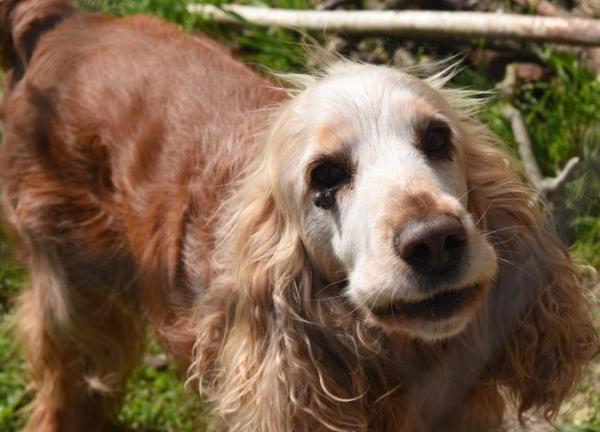
Squamous cell carcinoma
These tumors are related to sunlight, so they usually appear in areas on the body with less pigmentation. This may include the abdomen, scrotum or the nose. There are many which adopt the cauliflower appearance of warts on dogs.
It is normal for the dog to lick this protrusion, often excessively. This doesn't mean a dog will only lick cancerous growths as many may irritate their skin and cause them to lick the area. Since a squamous cell carcinoma is a malignant tumor, it can affect the surrounding areas and even spread to the lymph nodes and/or lungs.
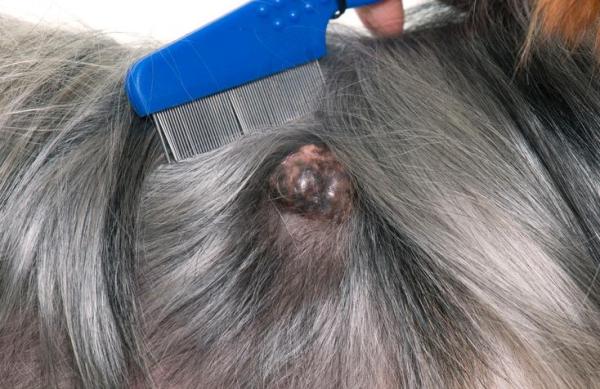
Transmissible venereal disease in dogs
If a dog is infected with a venereal disease, it is possible they will be accompanied by the appearance of warts on the genitals. It can affect both male and female dogs. Cells of these infectious diseases can be transferred from one canine to another during mating. However, they can also be passed on via licking, biting or scratching. These growths can also ulcerate.
In females, these dog venereal warts appear in the vagina or vulva. In males they will appear on the penis. In both sexes, they can also appear on the face, mouth, nose, limbs, etc. It is not frequent, but they can be spread by metastasis.
Canine oral papillomatosis
As the above name suggests, these warts occur when the canine papillomavirus affects the dog's mouth. Cauliflower shaped warts can appear on the inside of the mouth and lips. They most often occur in young dogs less than 2 years old. At the beginning, they are pink colored protuberances. As the virus develops, the warts increase in size and turn a grayish color, eventually falling off and eliminating themselves.
The canine oral papillomavirus is also responsible for warts and legions on other parts of the dog's skin. Often it will affect their feet as they lick their paws often and thoroughly. In these cases it most commonly affects older dogs.
Dog wart removal
Rather than treating warts at home, dog wart removal should be carried out by a veterinarian. As we have stated above, there are protuberances on a dog's skin which may look like warts, but which could be another more serious condition. Even if the dog has been previously examined, when the tumor bleeds or changes color, you should go for a follow up. It is normal for warts to increase in size, but they will not do so indefinitely. As they are benign and only provide a superficial nuisance, they will only require treatment if they cause discomfort to the dog.
An example of the above discomfort is if the dog has warts on their back. While this may not cause any pain on their own, they could rub against their harness which will be uncomfortable. Damaging the warts and causing them to rupture could be potentially harmful. Warts in the oral cavity can also be painful as they rub against the gums during eating. If we see black spots on a wart’s surface, it is likely that it has previously bled and scabbed over. In these cases we should contact our vet as bacterial infections can occur with skin lesions like this.
If we they do require dog wart removal, the most appropriate option is surgery. Additionally, being a viral condition, we can help bolster the dog's immune system by administering a quality diet, giving enough opportunity for exercise and providing an environment free of stress.
There are online articles and other sources which claim bananas or other dog wart removal home remedies can remove a dog's wart. However, there is little-to-no scientific basis for these cures. They may not cause any specific harm, but they can cause hygiene issues or rupture the wart if rubbed too vigorously.
Can I burn off a dog's wart at home?
No, never burn a dog's wart off at home. Even if the growth is a genuine wart, burning it off could have detrimental consequences. If you burn the wart off without seeing a veterinarian, you could be doing something to a malignant condition which could have equally dire results. Only a specialist should diagnose the condition and recommend a course of treatment. Most commonly these options will be surgery or to let them disappear on their own.
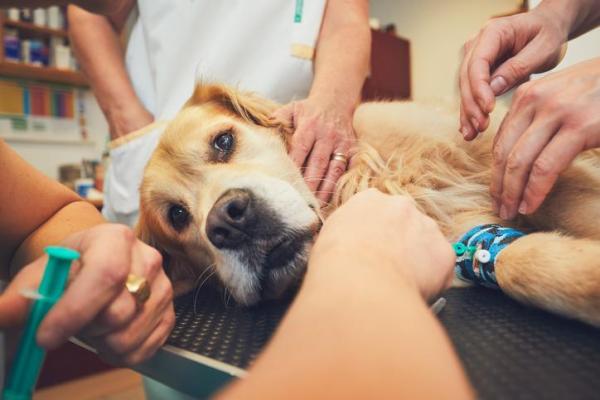
How dog warts are removed
When your veterinarian has decided they will remove the wart or warts, there are various surgical treatment options they may choose. The most common are the following:
- Excision: if the vet deems it necessary, they may remove the wart by making an incision and removing the extra tissue. They will need to use imaging tests before to determine the depth of the wart. In these cases, using a scalpel will help dig into the skin and remove any tissue we cannot see.
- Cryosurgery: this is a safe form of dog wart removal which is non-invasive. For superficial warts (i.e. those only on the skin), the vet will use liquid nitrogen to kill the unwanted cells and the wart will come off on its own. This is one of the most common types of dog wart removal treatment.
- Laser ablation: the use of a laser can remove the dog's warts, but it is often a costly process and not all veterinary clinics will have the equipment at their disposal. It removes warts at their roots, so it is seen as being very effective.
If you want to know how other neoplasms in dogs are treated, you may want to take a look at our article on treating lipoma in dogs.
This article is purely informative. AnimalWised does not have the authority to prescribe any veterinary treatment or create a diagnosis. We invite you to take your pet to the veterinarian if they are suffering from any condition or pain.
If you want to read similar articles to How to Remove Warts on Dogs, we recommend you visit our Skin problems category.
1. Lane, H. E., Weese, J. S., & Stull, J. W. (2017). Canine oral papillomavirus outbreak at a dog daycare facility. The Canadian veterinary journal = La revue veterinaire canadienne, 58(7), 747–749.
https://www.ncbi.nlm.nih.gov/pmc/articles/PMC5479657/



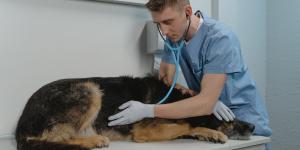
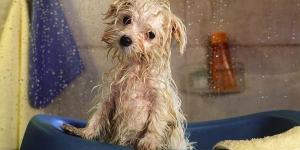

 Hello,
Hello,



